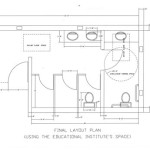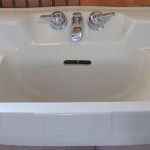Replacing Old Bathroom Sink Faucets: Essential Aspects
Replacing old bathroom sink faucets is a crucial task that contributes to the overall functionality and aesthetics of a bathroom. Understanding the essential aspects of this process is paramount to ensuring a successful outcome. This comprehensive article delves into the key considerations, providing valuable insights for homeowners and plumbing enthusiasts alike.
Before embarking on this project, it is essential to identify the part of speech of the keyword "Replacing Old Bathroom Sink Faucets." In this case, "Replacing" is a verb, indicating an action that is being performed. This understanding guides the content's focus on the essential aspects of the replacement process, ensuring a coherent and informative discussion.
The primary focus of this article is to provide a comprehensive guide to the essential aspects of replacing old bathroom sink faucets. These aspects will be discussed in detail, encompassing both practical and aesthetic considerations to assist readers in achieving a satisfactory outcome.
1. Choosing the Right Faucet: Selecting an appropriate replacement faucet is a crucial step. Consider factors such as style, finish, functionality, and compatibility with the existing sink and plumbing system. Explore various options and consult a professional if necessary to make an informed decision.
2. Gathering Necessary Tools and Materials: Before starting the replacement, gather all the necessary tools and materials, including an adjustable wrench, pliers, a basin wrench, Teflon tape, a flashlight, and a bucket. Adequate preparation ensures a smooth and efficient process.
3. Shutting Off Water Supply and Draining Lines: As a safety precaution, turn off the water supply valves under the sink. Open the faucet to drain any remaining water from the lines.
4. Disconnecting Old Faucet: Using an adjustable wrench, carefully disconnect the water supply lines from the old faucet. Employ pliers to remove the mounting nuts holding the faucet in place.
5. Installing New Faucet: Apply Teflon tape to the threaded ends of the new faucet's water supply lines. Connect the lines to the corresponding valves under the sink, ensuring a snug fit. Use a basin wrench to tighten the mounting nuts.
6. Reattaching Water Supply Lines: Reconnect the water supply lines to the faucet. Tighten the connections securely using an adjustable wrench.
7. Turning on Water Supply: Turn on the water supply valves under the sink and check for any leaks. If a leak occurs, tighten the connections further or replace the Teflon tape.
8. Finishing Touches: Install the faucet handle, aerator, or any other necessary accessories. Make sure all parts are securely fastened.
Replacing old bathroom sink faucets involves a series of essential aspects, from choosing the right faucet to ensuring a leak-free installation. By carefully considering these elements and following the steps outlined in this guide, you can confidently tackle this project and enhance the functionality and aesthetics of your bathroom.

How To Remove And Install A Bathroom Faucet

How To Replace A Bathroom Faucet Tinged Blue

Replacing Old Bathroom Sink Doityourself Com Community Forums

Diy How To Replace A Bathroom Sink Faucet Remove Install

The Pro Way To Replace A Bathroom Faucet Diy 760 594 1226

Installing A New Bathroom Faucet

How To Replace A Bathroom Faucet Home Repair Tutor

Bathroom Faucet Replacement For Beginners Making Maanita

How To Replace A Bathroom Faucet Tinged Blue

How To Replace A Bathroom Faucet Home Repair Tutor
Related Posts







